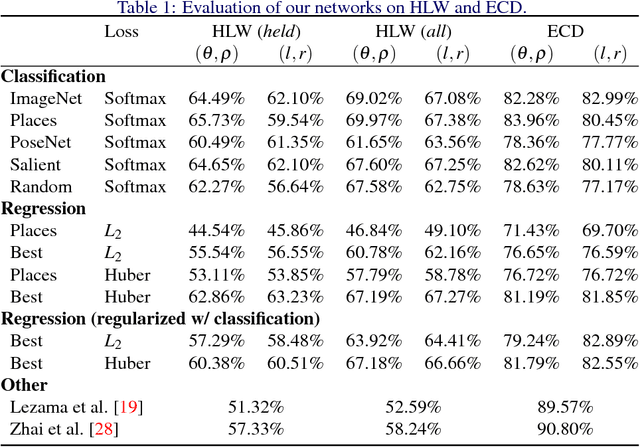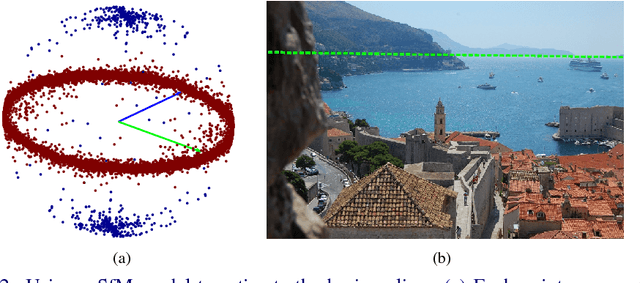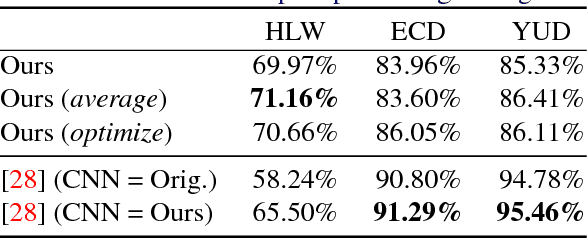Horizon Lines in the Wild
Paper and Code
Aug 16, 2016



The horizon line is an important contextual attribute for a wide variety of image understanding tasks. As such, many methods have been proposed to estimate its location from a single image. These methods typically require the image to contain specific cues, such as vanishing points, coplanar circles, and regular textures, thus limiting their real-world applicability. We introduce a large, realistic evaluation dataset, Horizon Lines in the Wild (HLW), containing natural images with labeled horizon lines. Using this dataset, we investigate the application of convolutional neural networks for directly estimating the horizon line, without requiring any explicit geometric constraints or other special cues. An extensive evaluation shows that using our CNNs, either in isolation or in conjunction with a previous geometric approach, we achieve state-of-the-art results on the challenging HLW dataset and two existing benchmark datasets.
 Add to Chrome
Add to Chrome Add to Firefox
Add to Firefox Add to Edge
Add to Edge